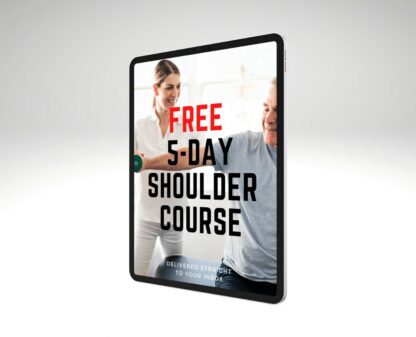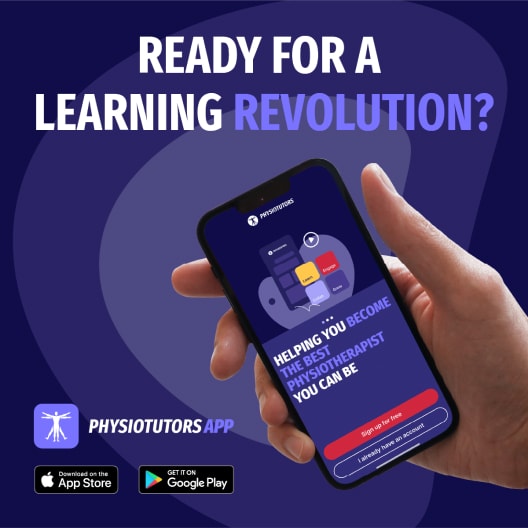Exercising Into Pain for RCRSP - Better or Worse?

Introduction
Last year in November, we published our research review about the feasibility of exercising into pain for rotator cuff-related shoulder pain (RCRSP) by Cavaggion et al. (2023). This paper found that 88% of patients adhered to 7 out of 9 supervised physiotherapy sessions, but this dropped to 50% of patients effectively participating in at least 22 out of 27 nonsupervised sessions. As this study’s primary focus was to study the feasibility of exercising into pain for RCRSP, only 12 participants were included. Without a control group, no conclusions were drawn about the usefulness of exercising in pain and further studies were needed to be conclusive. The authors learned from their feasibility study and adapted the methodology accordingly, to overcome certain barriers in line with compliance and feedback of the participants. This study, by using a randomized controlled trial design, will be able to give more meaning to the usefulness of exercising into pain for RCRSP.
Methods
This study included participants who suffered from chronic shoulder pain (at least 3 months) who were between 18-65 years of age. Their pain at rest was maximally 2/10. The presence of RCRSP was confirmed by at least 3 out of 5 positive tests:
- Pain during the Neer test
- Pain during the Hawkins-Kennedy test
- Pain in the Jobe test
- Painful arc between 60° and 120°
- Pain or weakness during external rotation resistance test
Upon inclusion, the participants were randomly assigned to Group 1 who exercised in pain or to Group 2 who performed pain-free shoulder exercises. Nine supervised physiotherapy sessions were scheduled over 12 weeks, with one session per week for the first 5 weeks and 4 sessions spread over the other seven weeks. During the unsupervised weeks, patients were instructed to do their exercises 3 times per week at home. In the supervised weeks, next to one supervised session, 2 times per week home exercises were prescribed.
Each supervised physiotherapy session consisted of 10-15 minutes of manual therapy and 15-20 minutes of exercises. In Group 1, a set of four progressively loaded exercises was given, with 3 exercises targeted at retraining the force couples of the shoulder muscles. These three exercises were performed pain-free and 1 exercise elicited pain within the range of 4-7 on a 10-point NRS scale.
Group 2 performed all 4 exercises free of pain. A maximal level of 0-2 on the NRS scale was tolerated.
The exercises were chosen by the physiotherapist from a predefined set of exercises and individually adjusted to each patient. Two exercises were performed in a closed kinetic chain (Category 1) and two exercises were selected from Category 2 (using resistance bands) and 3 (using dumbbells). Exercises from Category 4 were only used if necessary and included stretching.

Category 1 exercises could include:
- Press up
- Push out
- External rotation against a wall
- Wall glides
In Category 2, the following exercises using resistance bands were suitable:
- Low row
- Extension in 0° of abduction
- Horizontal adduction
- External rotation at 0° of abduction
- External rotation at 90° of abduction
Category 3 exercises were eccentric exercises using dumbbells/weights and could consist of:
- Abduction in the sagittal plane
- Abduction in the scaption plane
- Lower amplitude exercises were possible
The primary outcome of interest was the Shoulder Pain and Disability Index (SPADI), ranging from 0-100 with lower scores indicating no pain/disability and higher scores representing worse outcomes. The minimal clinically important difference is set at 20 points.
Results
Forty-three participants were included in the RCT. Twenty-one of them were allocated to Group 1 and twenty-two were assigned to Group 2. Their baseline characteristics are depicted here under.

The results of the primary analysis showed a significant effect of time, but no group-by-time interaction was observed. Regardless of group allocation, all participants improved over time in all aspects of the SPADI questionnaire. The reductions in pain and disability were greater than the MCID at all time points. At T0-T1 a reduction of 20.71 (CI95%: 14.91; 26.51) was observed and this effect was sustained over T0-T2 (26.42, CI95% 20.71; 32.12), and T0-T3 (33.21, CI95% 27.45; 38.96). Considering the confidence interval, the reduction at 9 weeks (T1) was not significant for every participant, since the lower limit of the interval was below the MCID of 20 points.


Questions and thoughts
By the absence of between-group differences, we can conclude that both exercising pain-free and exercising into pain for RCRSP are effective options to reduce pain and disability, considering the significant improvements over time. No additional effect was observed for exercising into pain. Interestingly, adverse events and adherence were similar in both groups. This indicates that those who had exercised into pain were not suffering more, contrarily to what one might assume. The authors therefore concluded that exercising into pain for RCRSP is not necessary. Equally, you could also state that painful exercise is not “dangerous” and does not lead to lower adherence or higher adverse effects. You could use this information to explain that having pain during movement does not equalize harm.
Already in the feasibility phase, the clinicians indicated that it was hard to find 4 painful exercises. The authors therefore adapted the procedures to include only one pain-provoking exercise. But also in this RCT, in six out of 21 included Group 1 participants, not a single exercise was able to be provocative. However, before the trial started, the authors had adapted their protocol accordingly to the possibility of finding no provocative exercises.
- In case not a single exercise could be found pain-provoking, the Rating of Perceived Exertion (RPE) was used instead of the NRS pain scale. This may possibly have led to a shift in perception, as using the RPE leads to a perception of more challenging exercises, while going higher on the NRS scale may imply that attention to pain is maintained.
- In people with chronic pain syndromes, therapy is often directed at a time-contingent or load-contingent pacing approach, where a gradual increase in difficulty is achieved.
- Lotze et al. (2015) already indicated “That pain is not indicative of damage implies that intervention does not need to avoid pain altogether. Training should be time-contingent or load-contingent, not pain-contingent. When pain increases during or after therapy, the patient can be reminded that this is not a symptom of damage but a protective strategy of an overly protective system. We have found that a balance is required between empathy and “holding the line” that adaptation, back to normal, will not occur without loading the system.”
By using the RPE in some participants, a switch has occurred in the intent of the study. Using the RPE as a scale to make exercises more challenging is an interesting path of future research. The validity of the current study might be impacted as not everyone in the exercise into pain-group effectively had pain during the exercises.
Talk nerdy to me
The methodology was in line with the procedures of the feasibility study, but more refined. For example, only 4 exercises and only 1 of those exercises had to provoke pain between 4-7/10 on a numeric rating scale (NRS). This adaptation occurred because the authors believed it would increase adherence and compliance. This idea was confirmed as 100% adherence to the supervised physiotherapy sessions was achieved in both groups, and 86% adherence was recorded in the home exercise program in the pain-exercise group compared to lower adherence in the no-pain group (65%). This shows the power of running a pilot or feasibility study before designing a randomized controlled trial.
Perceived recovery and satisfaction were very high in both groups. After 9 weeks, all Group 1 participants considered themselves recovered, and 94% in Group 2 also did.
You should be aware that the current results are only generalizable to patients who have only minor pain or discomfort at rest (NRS 2/10) as it was one of the main requirements upon study inclusion. As no true control group was included in the current RCT, we cannot confidently say whether it is exercise that caused the improvements, or natural history that had its spell.
Take-home messages
The current study indicates that exercise doesn’t need to be painful in the management of chronic RCRSP. Yet, it also showed that it is not necessary to avoid pain during exercise in this population. Conclusions are limited to people with RCRSP for at least 3 months who have minimal resting pain levels.
Reference
TWO MYTHS BUSTED & 3 KNOWLEDGE BOMBS FOR FREE
What university doesn’t tell you about shoulder impingement syndrome and scapula dyskinesis and how to massively level up your shoulder game without paying a single cent!



